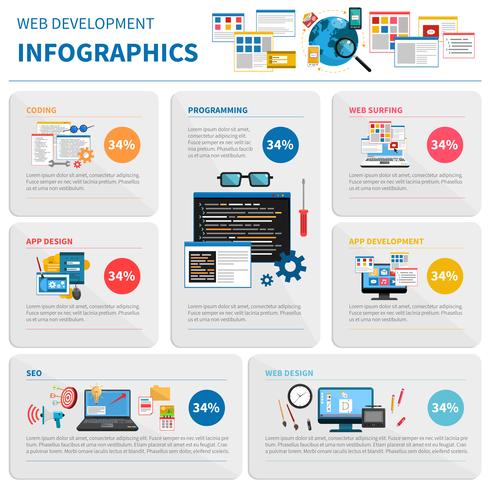Intrigued In Learning Just How Web Site Style Has Progressed? Take A Journey Via The Improvement
Intrigued In Learning Just How Web Site Style Has Progressed? Take A Journey Via The Improvement
Blog Article
Authored By-Pappas Dalby
In the past, internet sites were simple and concentrated on information. Navigating was straight, and layout was for desktop computers. Now, user experience is crucial. Data overviews designs for simple navigating. Receptive designs fit different gadgets. Today, dark mode lowers strain, and minimal menus boost navigation. Interactive functions engage customers, and bold visuals stand apart. AI assimilation increases engagement. See how style has evolved to boost your on-line journey.
Early Days of Web Design
In the very early days of website design, simplicity preponderated. Sites were standard, with restricted colors, fonts, and layouts. The focus got on giving information rather than flashy visuals. Customers accessed the net with slow-moving dial-up links, so speed and functionality were key.
Navigating food selections were straightforward, typically located at the top or side of the page. Internet sites were designed for computer, as mobile surfing wasn't yet common. Content was king, and developers prioritized easy readability over complicated layout components.
HTML was the main coding language used, and designers needed to work within its restrictions. Animations and interactive features were marginal contrasted to today's requirements. Internet sites were static, with little dynamic content or tailored user experiences.
Rise of User-Focused Layout
With the development of web site layout, a change in the direction of user-focused design concepts has ended up being progressively prominent. Today, developing websites that prioritize customer experience is vital for engaging visitors and achieving service goals. User-focused style entails recognizing the requirements, choices, and actions of your target audience to customize the web site's format, material, and features as necessary.
Designers now perform comprehensive research study, such as user surveys and use testing, to gather understandings and feedback directly from users. This data-driven technique helps in producing user-friendly navigating, clear calls-to-action, and aesthetically attractive interfaces that resonate with site visitors. By placing the individual at the facility of the layout procedure, web sites can provide an extra personalized and enjoyable experience.
Responsive design has likewise become a vital facet of user-focused style, ensuring that websites are optimized for different devices and display dimensions. local seo ranking and usability, accommodating the diverse means customers connect with websites today. Essentially, https://email-marketing-automatio38495.livebloggs.com/32679880/the-green-hosting-motion-environmentally-friendly-internet-solutions of user-focused layout symbolizes a shift in the direction of producing digital experiences that prioritize the demands and expectations of completion customer.
Modern Trends in Website Design
Explore the most up to date trends shaping web design today. One prominent fad is dark setting design, providing a sleek and contemporary appearance while minimizing eye pressure in low-light settings. An additional essential fad is minimal navigating, simplifying menus and boosting customer experience by focusing on essential elements. Incorporating micro-interactions, such as animated switches or scrolling results, can create a more appealing and interactive web site. Responsive style remains essential, making certain smooth individual experiences throughout various gadgets. Additionally, utilizing strong typography and asymmetrical layouts can include aesthetic rate of interest and draw attention to certain material.
Incorporating AI technology, like chatbots for consumer support or personalized suggestions, improves user involvement and improves procedures. Availability has additionally come to be a considerable fad, with developers prioritizing inclusive style techniques to deal with varied customer requirements. Welcoming sustainability by enhancing site efficiency for rate and effectiveness is one more arising trend in website design. Teaming up with customer feedback and data analytics to repeat and improve layout constantly is vital for remaining relevant in the ever-evolving digital landscape. By accepting https://spencermgbvp.qodsblog.com/26607193/boost-your-capability-to-develop-effective-phone-call-to-activity-for-website-design-making-use-of-expert-suggestions-that-can-enhance-the-efficiency-of-your-internet-site , you can produce a visually attractive, straightforward internet site that resonates with your target market.
Final thought
As you reflect on the evolution of web site style from the very early days to now, you can see how user-focused design has ended up being the driving force behind modern patterns.
Welcome the trip of change and adaptation in website design, constantly keeping the customer experience at the forefront.
Stay current with the current patterns and modern technologies, and never ever quit evolving your method to create aesthetically magnificent and user-friendly websites.
Develop, adapt, and develop - the future of website design remains in your hands.
